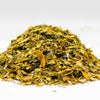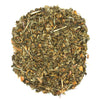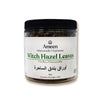Witch Hazel (Hamamelis virginiana) is a deciduous shrub native to North America, renowned for its delicate, golden-yellow blooms and fragrant, slightly astringent leaves. Deeply rooted in historical botanical traditions, Witch Hazel Leaves have long been valued for their versatility in herbal and wellness applications.
Culinary & Aromatic Appeal
Flavor & Aroma
- Mildly astringent with subtle earthy undertones.
- Delicate fragrance with hints of woody and floral notes.
Common Uses
- Herbal Teas: Often steeped in warm water for a naturally earthy infusion.
- Culinary Blends: Occasionally incorporated into bitters and botanical extracts.
- Aromatic Sachets: Used in dried form for naturally fragrant home blends.
Beyond the Kitchen
Witch Hazel Leaves are widely appreciated for their decorative, botanical, and traditional applications:
- Landscaping & Ornamentation: The tree’s unique blossoms and vibrant foliage add seasonal beauty to gardens.
- Herbal Preparations: Commonly found in botanical infusions and topical herbal blends.
- Cultural & Historical Use: Revered in folklore and indigenous traditions for centuries.
Why Choose Witch Hazel Leaves?
- Versatile Botanical Ingredient: A unique addition to teas and herbal formulations.
- Rich Heritage: Deeply respected in traditional botanical practices.
- Natural & Aromatic: A fragrant, earthy leaf with ornamental appeal.
Botanical & Cultural Significance
Botanical Name: Hamamelis virginiana
Common Names:
- English: Witch Hazel, American Witch Hazel, Winter Bloom
- French: Hamamélis de Virginie
- German: Virginische Zaubernuss
- Spanish: Hamamelis, Avellano de Bruja
- Other: Snapping Hazel, Spotted Alder, Striped Alder, Winterbloom, Goldbloom





